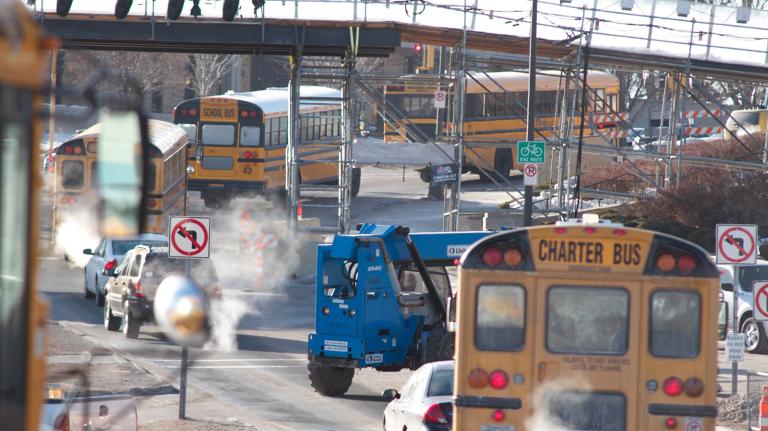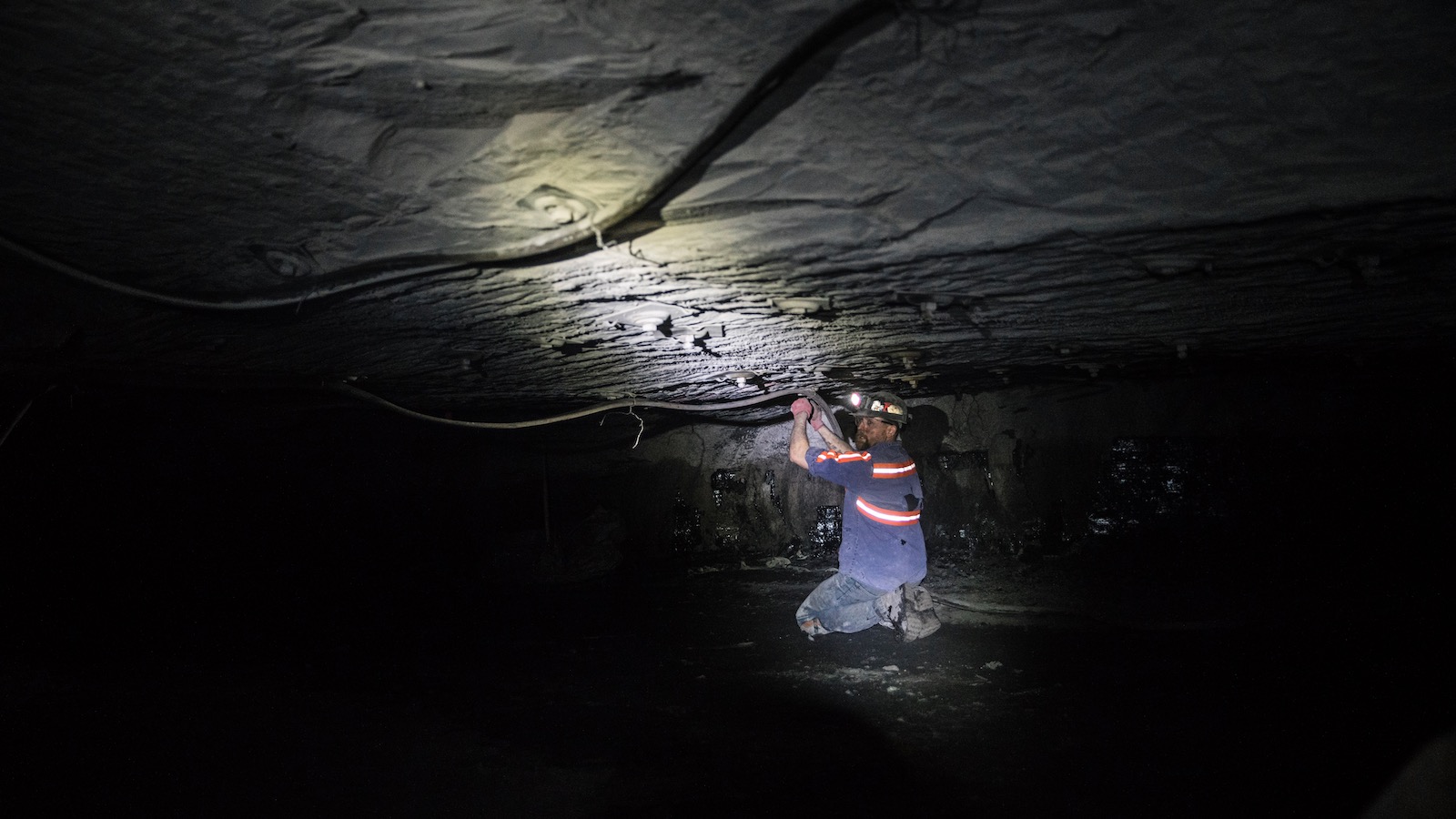Gary Hairston worked as an electrician in an underground coal mine for almost 30 years. It was hard, often grimy work. When a big machine called a continuous miner dug into the hard earth, it kicked up all kinds of dust. Slowly, Hairston began to notice that daily tasks wiped him out. At night he woke up struggling for breath. He developed a nasty cough that worsened over time. During a routine health screening a few years ago, doctors noticed a spot on his lung. Their diagnosis was grim: coal workers’ pneumoconiosis, better known as black lung. Its progress is slow, but terminal. When Hairston was 48, he retired to look after his health and turned to organizing, so that future miners might work in safer conditions.
Miners have always been at risk of black lung, but pulmonologists and medical researchers have seen a marked increase in recent years. The disease, while not genetic or contagious, often wends its way through families who work the mines. Hairston’s brother and father have it, too. Now, between frequent trips to the hospital, he fights for the rights and needs of others like them as president of the National Black Lung Association. He worked for decades before his diagnosis, but these days sees younger workers who don’t make it nearly that long.
“These younger coal miners had been in the mine five years and some barely could breathe, they had to take breaths, even at talks,” Hairston said.
Experts point to the increasing prevalence of crystalline silica in the mines as a cause of this change. Silica is often found in quartz, which is embedded deeply within the sandstone that surrounds coal. It is ground to fine dust and kicked into the air by the machines that cut coal from ground, then settles deeply in the lungs, scarring the tissue and making it increasingly difficult to breathe. As mining companies have exhausted high-quality seams of coal, they’ve increasingly turned to inferior veins with larger volumes of other minerals, making silica exposure more likely. Pulmonologists have called the increasing prevalence of coal workers’ pneumoconiosis an epidemic, which they’ve blamed in part on lax regulations, too little protective gear, and lack of safety training for miners. Researchers have found that as many as 1 in 5 miners in Central Appalachia may have black lung, and 1 in 20 have progressive massive fibrosis, the most advanced form of the disease, which is linked directly to silica exposure.
The Mine Safety and Health Administration* oversees mine safety and operates under different rules than the Occupational Safety and Health Administration. Under its guidelines, miners can be exposed to twice as much silica dust as workers in any other industry. After decades of protest by coal miners and their families demanding a stricter exposure standard, MSHA has introduced some preventative measures, including increased inspections, miner education, and greater dust sampling. But many workers and their allies find the agency’s response wanting, and they want the acceptable level of silica exposure cut from 100 micrograms per cubic meter of air to 50, bringing it in line with OSHA’s regulation.
“We really try to fight for the silica standard,” Hairston said. “So some of these younger miners won’t go through what we went through.”
Federal mining regulators, along with the Kentucky and West Virginia coal associations, did not respond to requests for comment.
Rumblings of an epidemic, and rising concern about silica exposure, have been underlined by data. A study by the Centers for Disease Control and Prevention released earlier this year found that not only are cases increasing, but mortality rates from black lung and other lung disease have steadily climbed among miners born after 1939, with mortality highest among the youngest miners. An American Thoracic Society study published last year, which involved many of the same researchers as the CDC study, linked increased silica exposure directly to the increase in black lung cases. A joint investigation by NPR and Frontline five years ago found thousands of instances in which miners were exposed to dangerous levels of silica. Calls for a stricter silica exposure standard followed, but still, nothing.
Black lung patients and their advocates petitioned the Mine Safety and Health Administration for an updated silica rule in 2011, but it took until last year for the agency to propose an updated rule and send it to the Office of Management and Budget for review. By April, mine regulators had promised to deliver a draft of the proposal, which would then go through a lengthy public comment period and possible revisions before approval. But the rule is still with the OMB, and no one’s sure why it’s taking so long.
Celeste Monforton, a former MSHA official and occupational health researcher at George Washington University and Texas State University, worries that further delays could once again punt a decision to a new administration. “The clock is ticking,” she said. “The whole purpose of a proposed rule is to propose something and get that comment, not trying to make some perfect document.”
Monforton says that more rigorous coal dust sampling — including continuous air monitoring and having inspectors spend more than a day at a given location — and preventative measures like increased ventilation could help prevent black lung. “The things that actually control the dust are the most effective way to protect mineworkers,” she said. But, she adds, history has made it difficult to trust mine operators with miners’ welfare, making strict regulations and enforcement necessary. As Lynn Morley Martin, who was secretary of labor under President George H.W. Bush, said in 1991, the coal industry is addicted to cheating.
In yet another example of that, on June 8, a judge sentenced the Black Diamond Coal Company and Walter Perkins, a certified dust examiner, for falsifying coal dust samples at a mine in Floyd County, Kentucky. In an unprecedented move, MSHA fined the company $200,000 and ordered it to pay $400 apiece to former miners to cover black lung screenings that are available at no cost to those still working. Perkins, who lied to investigators about a coal monitor being faulty, is headed to jail for six months.
Chris Williamson, whom President Biden appointed to lead the MSHA in 2022, has stated his intent to pursue stricter standards on silica dust exposure. In addition to holding Black Diamond and other companies accountable for safety violations, the agency announced last year that it would more rigorously enforce inspections, an initiative it called Miner Health Matters. But many miners’ advocates say the agency needs more funding to protect coal miners.
“Once we get the standard passed … we have to see how we can make sure they get funded to hire more inspectors,” Hairston said.
That’s difficult when the agency’s $400 million budget has been in trouble for years. The organization, which oversees workplace safety in the nation’s mining and mineral processing industries, lost 30 percent of its staff between 2013 and 2022, with inspection capabilities taking a big hit and funding for the agency more or less remaining flat. While current safety standards focus on personal protective equipment for miners, advocacy organizations like the Black Lung Associations want to see a safer threshold for dust levels throughout the workplace.
The coal industry has long fought stricter regulations on silica, but when miners seek benefits for their resulting illness, it is loath to pay. It often fights sick coal miners in court for years over their eligibility for health care and other benefits. Past investigations have found that filing for bankruptcy allows many companies to get out of the business without paying their debts to employees and others. Willie Dodson, an organizer with advocacy organization Appalachian Voices, says, once again, that’s cheating.
“It just seems like they don’t want to spend money on the true impacts of their operations,” Dodson said. “It just seems like the coal lobby is just more concerned with the profit of the top dogs than they are for the health and well being of the people actually doing the work.”
*Correction: This story originally misidentified the name of the agency.




